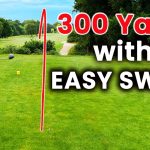Every golfer must know the little details of a golf set and its adjustment. Among them, the lie angle is a crucial fact to understand. Usually, it seems difficult for beginners. But understanding and determining a lie angle isn’t hard at all.
Once you get this, you can make any small adjustments when required. And able to make an efficient change in your performance as well.
Today we are going to discuss the lie angle as well as show how to determine the lie angle for irons.
What is a lie angle?
Before starting measurements, we should know what is the lie angle for irons?
Basically, a lie angle is created when the iron club is down in the address position between the ground and center of the shaft. The standard lie angle range is between 61 degrees to 62 degrees for irons.
If the loft is increased, the lie angle also increases along with it.
Determining the lie angle is important to know how the club interacts with the grout at each shot.
When lie angle is not suited with your swing, there are 2 scenario raise such as-
The toe is not able to contact with the ground for the iron club is upright
Secondly, the heel can’t make contact with the ground at impact for the too flat iron club.
How to determine lie angle for irons
Usually, the lie angle is measured along the path of the shaft plane towards the horizontal face plane. That influences the ball’s direction.
If the lie angle is incorrect, the player needs to adjust it. Or get rid of misdirected ball flight by swing compensations.
Hence, a golf player should determine the lie angle of irons. But how?
Well, we are going to discuss how you can determine the lie angle for irons.
You can fit dynamically, or statically or pay attention to the dispersion pattern on trackman.
Static measurement ( Use PING Color Code)
First, you should figure out what way to swing either right-handed or left-handed. That dictates which waist to floor you are going to take. For right-handed players, since the left-hand goes on the top of the grip first and vice versa. That’s where you take the first measurement.
For static determination of lie angle, you need to use the PING color code. This process is also called waist-to-floor measurement.
Again, the waist-to-floor measurement is a great way to get a good starting point. You can fit dynamically as well, but fitting statically is usually pretty close unless someone has a completely different golf swing.
So far, it really helps you to get ball parkour where you are at. So now you can use the PING fitting tool for this measurement.
So PING has a nice chart that they use based on how tall you are and what measurement you are from your waist to floor.
If you play one degree upright with your irons, you will see a lot of dots on the trackman.
For measuring the lie angle for irons, as example, the height is 5 feet 10 inch. The length from waist to the floor is 35 inches.
Now you should intersect the ping chart at the point of 10 feet 10inchs and 35”.
You can see that it will fall on the blue spark.
Again, this terminology is one degree upright. As the standard wide lie angle is 62.5, it will be 63.5 now in the lie angle machine.
Dynamic Measurement ( The sharpie test)
We take a look at what angle we should start with. We also mention, a good starting point is usually pretty close, but everyone does swing differently. So we like to measure dynamically as well.
The dynamic test of lie angle is also known as the “Sharpie Test”. For the Sharpie test, draw a sharp bold line vertically at the middle of the ball.
You can use a marker to draw the heavy line. Then set it in such a way that it faces the clubhead. Don’t use a permanent marker, the ink should be transferred to the clubhead after the shot.
Now it’s time to observe. Hit the shot, check the marker line left on the club. By Seeing the vertical line, we can see how you deliver the ball.
If the transmitted line is vertically placed, the lie angle is good enough to go.
Again, if the line turns over towards the toe of the iron, it is considered the club is too upright. The lie angle for irons needs to be persuaded to get the vertical line.
The opposite situation can occur as well. The angle will be regarded as too flat if the sharped line is turned around to the heel of the iron club.
In this situation, to make it upright, you need to bend the club.
The better way is to use a golf ball that’s got a line through the middle of it.
If not, then we can draw a sharp line in the middle of the golf ball.
You can put face tape on the club and how that lie angle is on the face.
In addition, we also use a lie board to determine the lie angle of irons. It’s a great tool to educate a customer. It does sit a little bit higher so it’s about a quarter of an inch higher off the ground.
If you are hitting off something firm, someone may change up their technique a little bit too.
You definitely can notice tendencies of the golf ball as well.
Final Verdict
It’s time to wrap up the content. The lie angle has a great impact on distance and speed. Also, it needed to adjust with their particular swing style and determine the initial direction of each shot.
If you can’t measure the lie angle accurately, it will affect your overall performance as well.
Hopefully, now you can easily determine the lie angle for irons.





